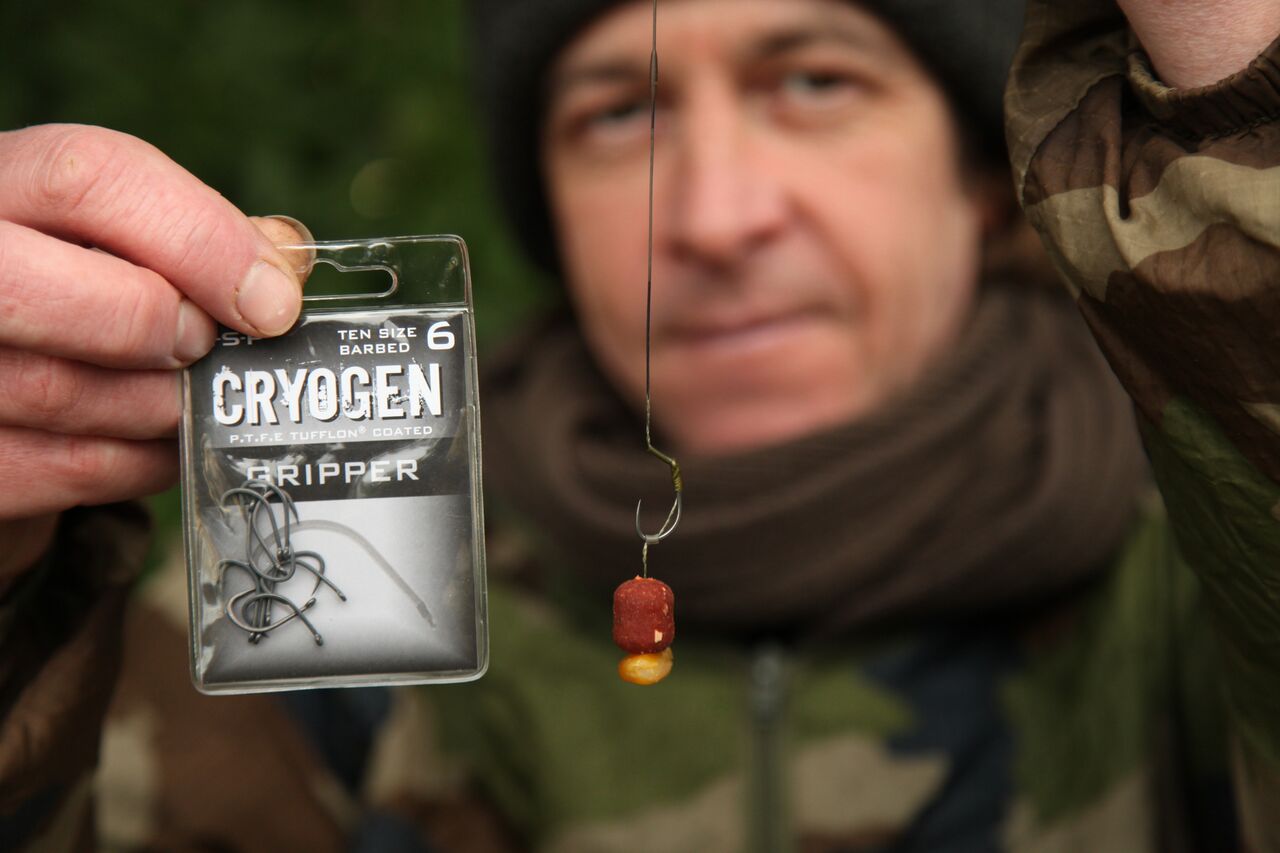 Last week we showed the video of how Tel ties his bottom bait rig which has caught him loads of carp this winter. Well here is a more detailed step by step showing exactly how he ties this highly effective presentation.
Last week we showed the video of how Tel ties his bottom bait rig which has caught him loads of carp this winter. Well here is a more detailed step by step showing exactly how he ties this highly effective presentation.
Pull a length of coated braid off the spool and then smooth and straighten it out by warming it up under tension through your fingers.
Strip 5-6 inches of coating from one end and then tie a small hair loop in the braid. At this point it’s worth tying an extra knot on the hair just above the loop, as this helps to grip the hookbait. This extra knot is particularly beneficial when using double baits, for instance two tigers or maybe a couple of ten mill boilies, as the extra grip helps stop the baits from separating on the hair.
Take a hook from the packet. In this case I’m using the knew Grippers in a size 6 which are consistently sharp straight from the packet, but it’s still very important to first check that your chosen hook is up to standard. Personally I ALWAYS test my hooks by seeing how easily the point sticks to my nail. A good sharp hook should instantly stick with no sliding or scratching. If in doubt, throw it out.
Thread the hook onto the coated end of the braid and slide it down, so that the hair exits from the back of the eye. At this stage you’l need to determine the length of the hair, which is obviously dependant on the size of the bait being used. I tend to start off by making the hair slightly longer than needed, as I know that once the rig is completed I can’t lengthen the hair, but I can always tie yet another knot in the hair to shorten it if necessary (at the same time giving even more grip to the hookbait).
Next, whip the hook on no-knot style. The amount of turns used really isn’t important, just whip it down until you have around 15mm of supple braid left over once you’ve gone back through the eye and completed the knot. How many turns your able to use is obviously dependant on how long you made the hair and how much coating you stripped off in the first place, but I generally end up with anything between 7 and 12 turns. Once again, this really isn’t so important as the knot will eventually be covered with shrink tubing, the important thing is having around 15mm of supple braid exiting the hooks eye once the no knot has been completed.
Cut a short length of 0.5mm silicone tubing, around 3mm long is perfect. Too short a length will slide up and down the hooks shank too easily, and too long a length will struggle to slide at all, even when wet. The idea is to grip the hair into position at the bend well enough to take a cast, but not so well that it prevents the hair and hookbait from sliding back up the shank and out of harms way whilst playing a fish. Slide this short length of silicone tubing onto a crochet style baiting needle before then transferring it onto the hair.
The next stage is a little bit tricky as you need to slide the silicone over the hook point without piercing through the braid or the silicone itself, but with practise it becomes easy. The ideal position to trap the hair when using heavy, unbalanced bottom baits, is between the bottom of the straight below the barb and halfway around the hooks bend.
Next, trim off around 12-14mm of thin, 1.2mm shrink tubing and slide it onto the link and over the hook, leaving around 5-6mm still protruding above the eye.
Stick the kettle on, and once boiled, turn off your stove and simply lower the hook directly into the water. This will shrink the tubing faster and tighter than what steaming it will, plus it helps soften the braid of both the hair and the supple hinge above the eye, aiding turning and helping to make the finished rig more efficient.
Upon lifting the hook out of the kettle, be quick to then kick the shrink tubing over at an angle before it cools. Don’t waste the hot water, make a brew. That’s the important part over with.
Determine the length you want your hooklink to be and then simply tie a figure of eight loop knot in the other end of the coated hooklink. This makes changing hooklinks a doddle, plus the stiffer, doubled over section helps to avoid tangles when casting.
Finally, add a small mouse dropping of tungsten putty to the middle of the hooklink to help pin it to the deck. Job done!
Terry Hearn